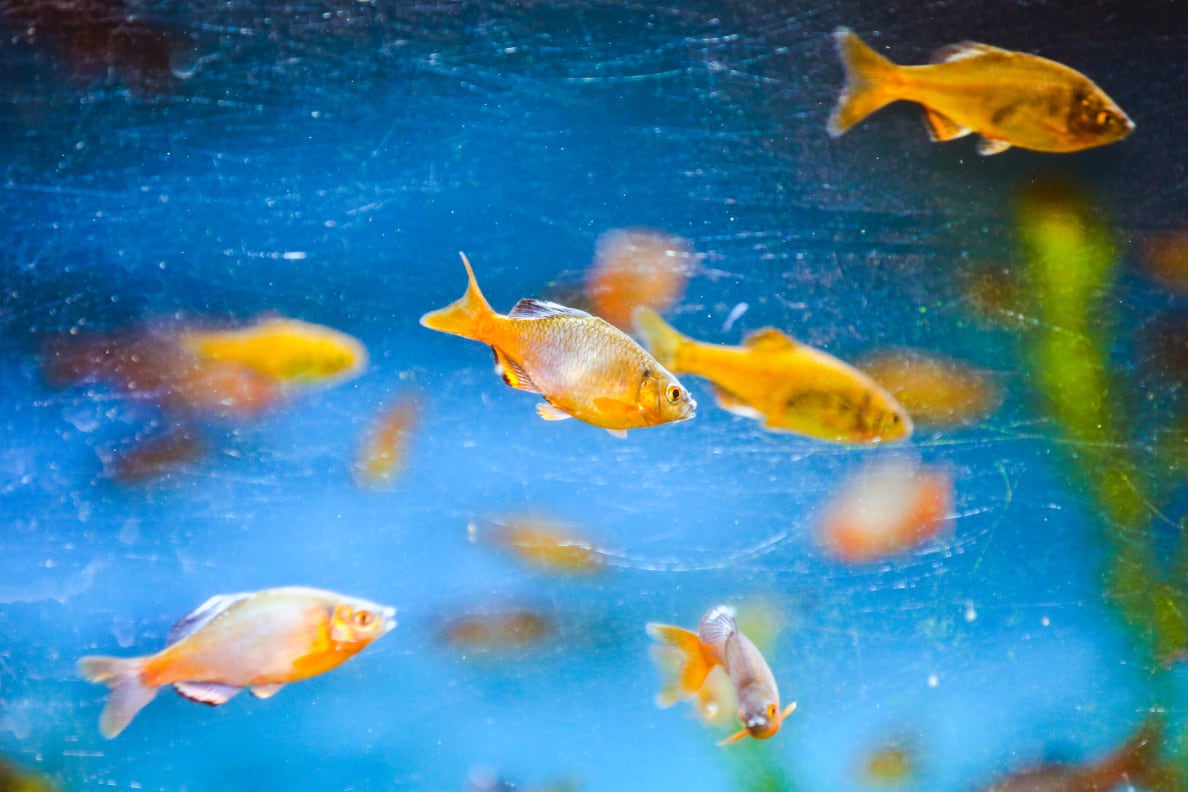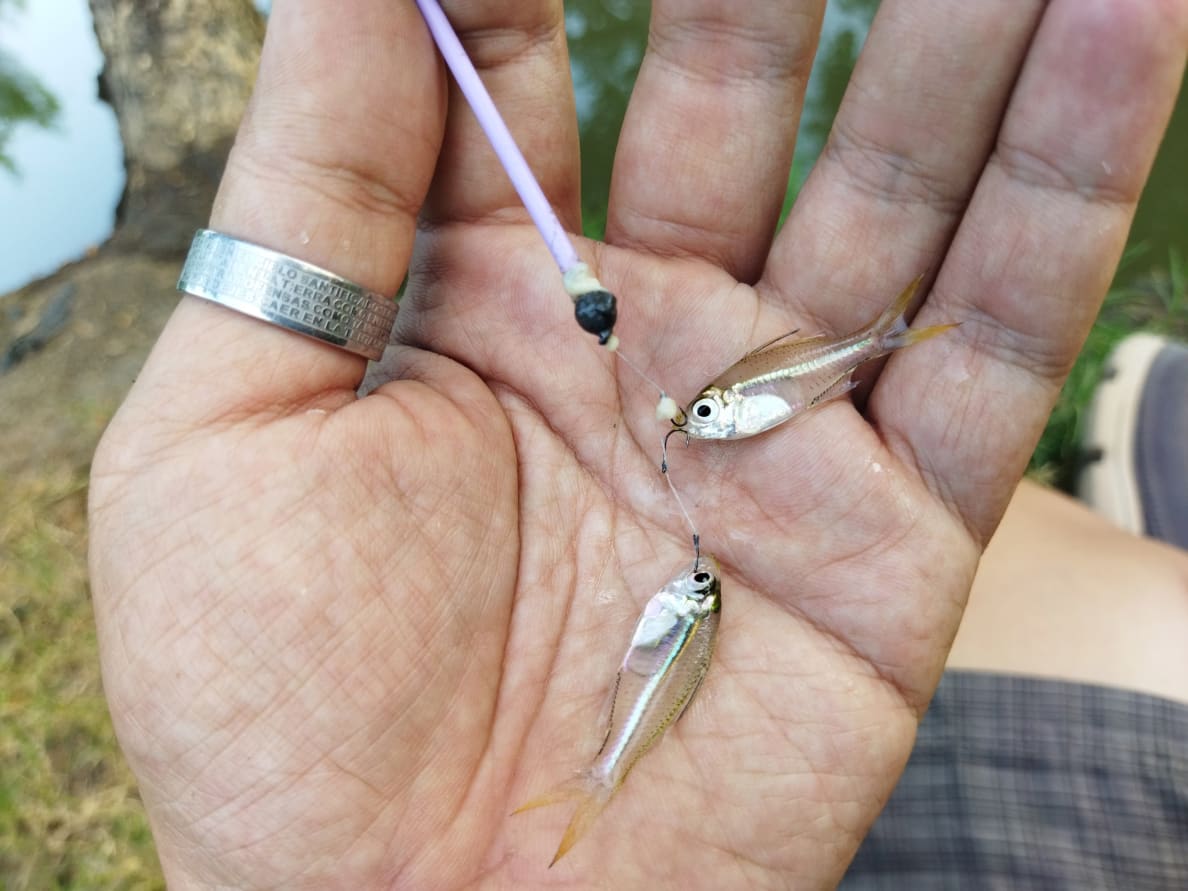While you might think fishing is all about catching the biggest fish possible and using it as a dating profile picture–or, at the very least, posting it on Instagram)–there’s an emerging group of fishermen who think just the opposite. It’s not about how big the fish is. Instead, it’s about variety. And there’s no better way to catch unique fish than by reeling in the smallest organisms that’ll bite.
They’re called micro-fishermen, and they are part fishermen, part amateur biologists, and while they still post their photos on social media, they confine themselves more to Facebook groups than anything else.
The Art of Microfishing, a Facebook group with over 10,000 members, and a corresponding blog, is run by Edward Johnson, a 50 year old currently living in Sydney, Australia. Johnson says he started both in September 2021, but he may have always been a micro-fisherman. “At the age of 4, I would catch tiny sunfish for my aquarium,” he says.
Beast Travel Digest
Get the entire world in your inbox.
After continuing to target small fish, the pandemic is when things really got started for Johnson. He launched the site and the Facebook group, and started selling micro hooks, tiny fishing hooks designed for catching small fish, and even wrote a book about the subject.
Microfishing is inspired by an ancient Japanese tradition called tanago. Using a tenkara rod about the size of a number two pencil, anglers aimed to catch Tokyo bitterling (tanago in Japanese), which are maximum 70mm in length .

While the tools used are the more or less the same, microfishing differs from tanago insofar as it’s not about catching the smallest fish, but rather, the rush comes from seeking out and catching as many different species as possible.
Take Galen Lyon, a 22 year old from Homer, Alaska. He says he grew up fishing in Alaska, “with a large interest in the biological diversity surrounding the species [he] was targeting.” Instead of fishing “for dinner,” Lyon has always done “catch and release,” and targeted “juvenile and bait species.” He says “it’s just as satisfying and enjoyable catching a small fish as it is catching one that’s 20 pounds, because it has to do with a larger interest in the diversity and biology of fish, rather than just capturing them for food.”
In order to identify each catch, anglers post photos of their fish, placed in their palm for scale, on the Facebook group, where comments are less often “wows” and more frequently helpful hints in uncovering what species the fish in question might be.
“Juvenile Golden Shiner or Eastern Silvery Minnow?” one post reads, with comments ranging from “Golden!” to “Strongly decurved lateral line suggests Golden Shiner.” After the fish is identified, the author of the post will typically go in and edit the post to have the species name in it, for reference.
More serious anglers might take it a step further. Many upload their catch and location to Fishmap.org, an online database of fish and their location all over the world hosted by the North American Native Fishes Association, a non-profit dedicated to the appreciation, and study of native fish in North America. This is where many micro-fishermen look to in order to discover where species they haven’t caught might be lurking, and begin to plan trips around reeling them in.
Of course, there are microfish everywhere, but the place where it seems to be taking up steam is in North America. One fisherman recounts seeing someone on the group post a location for an American Brook Lamprey. They made their way from Wisconsin to New Jersey to catch the fish, and proudly posted it on the site, writing “My first micro jawless fish!” Comments ranged from, “that one is hard to catch, what bait did you use?” to “nice work!”
Others wrap it into their current travel plans. One mentioned that they were visiting a friend in Florida and brought their fishing gear along. They posted their catch of Xiphophorus, a gleaming rainbow colored fish with a sword as a tail.
Anglers aren’t the only fans of Fish Map and The Art of Microfishing Facebook group. Biologists also stay abreast of its updates as a way to monitor fish populations.

Some of those scientists wonder if microfishing, despite its intent, might have an overall negative impact A 2020 policy paper in Fisheries Magazine raised concerns about the potential for increased mortality rate on caught-and-released fish, as well as how catching fish at the beginning of their life cycles might disturb their lifecycle.
“There is no doubt that there are some very sensitive small-bodied fishes that may not respond well to micro-fishing catch-and-release,” Steven Cooke, a professor of biology at Carleton University, who authored the paper said. “There is need to develop science-based best practices to ensure that microfishers are provided with information to guide them.”
However, Zach Alley who currently works with EDGE Engineering and Science argues that while some might think that microfishing might lead to disrupting fisheries, there is no evidence of this. “There’s no evidence that microfishing negatively impacts fisheries,” Alley says, adding “at least, not yet.”
Instead, Alley is an active member in microfishing groups despite not being one himself. “Microfisherman frequently reach out to me for assistance with identifying fish they’ve caught from various places throughout the eastern US, and ask me questions about updates in taxonomy,” Alley says.
Because Alley is currently doing genomics research in the hydrophlox group, he says “he gets a lot of questions about those fish, too,” and that they help him identify where these fish might be.
Alley doesn’t think this is much of an issue.
Instead, their involvement and interest has been a great way for biologists to locate targets easier, and it’s a resource Alley mentions he uses for scientific portraits as well.
As for why microfishing may be exploding in popularity, there are a few theories. Alley says that one reason could be the pandemic forcing more people outside. But another is more interesting. The equipment is significantly cheaper than traditional fishing rods, and so perhaps it is more easily accessible, as well.
The bottom line is clear though: Microfishing is more than a hobby. For some, it’s a way of life, a way to see the world, even if it’s on a small scale.
